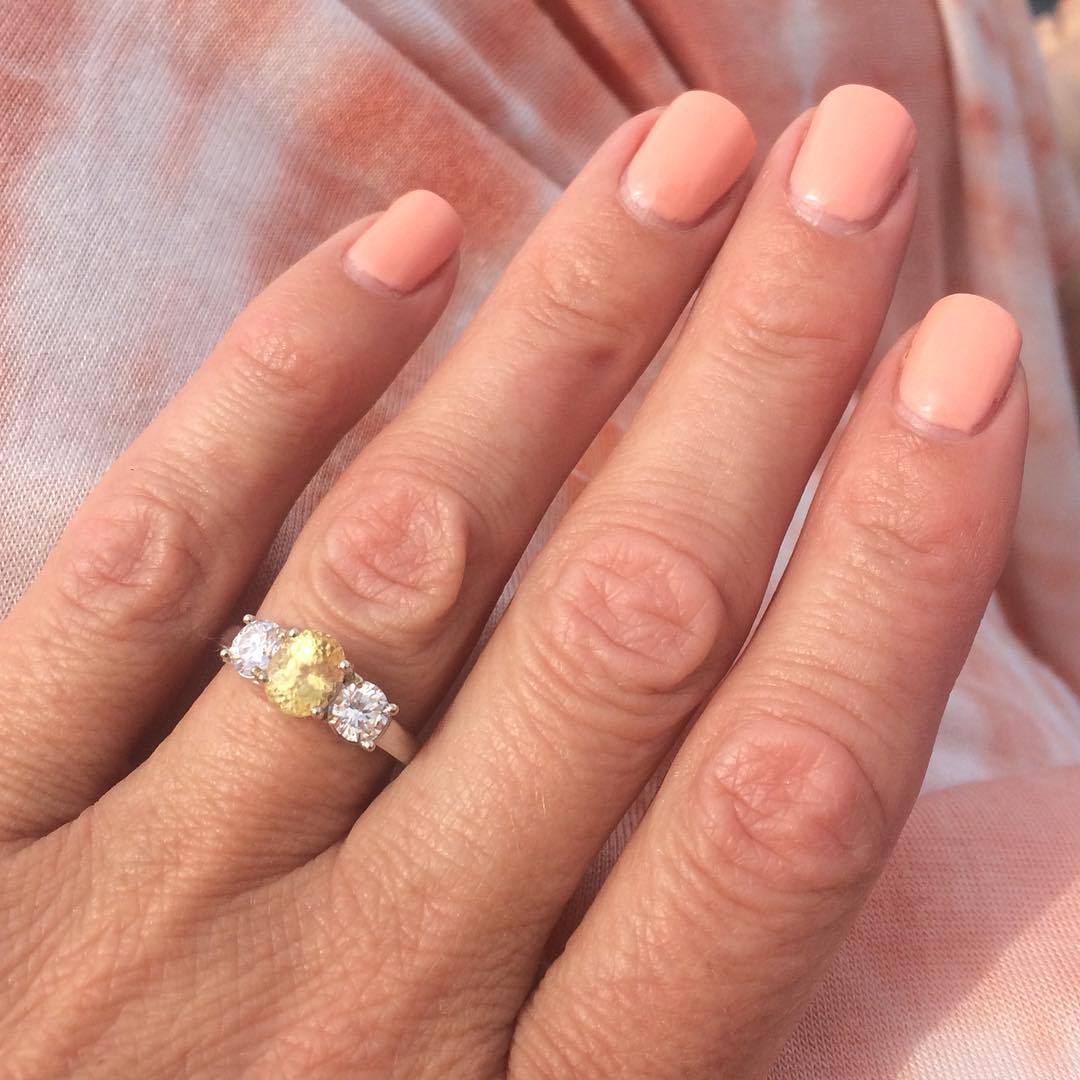Not buying that “diamonds are a girl’s best friend?” The pricey rock isn’t your only option when it comes to putting a ring on it.

Two big trends in engagement rings these days are moissanite (a lab-created diamond alternative) and coloured gemstones.
Nisa Drozdowski, who got engaged in August, knew she wanted her ring to be unique and personal.
“Having something traditional because ‘that’s the way you do it,’ really wasn’t important.”
So like the majority of women, according to the 2015 Wedding Bells survey, she offered her partner some pointers.
“I suggested maybe a Montana sapphire would be a nice stone to have in my ring,” she says. “His family has a cabin there … And it’s now a place we like to vacation … It’s just a really special place for us.”
Coloured gemstones
Sapphires come in a multitude of colours. The yellow gem Drozdowski’s fiance chose stole her heart.
“It’s the most beautiful thing I’ve ever seen. It’s the best gift I’ve ever received,” she gushes.
“There are a lot of other things you can do. I think vintage rings are a great way to go. They have another love story behind them perhaps that you can draw from or a family heirloom.”
One family heirloom in particular had a big effect on the growing popularity of coloured stones.
The bright stones aren’t so much a new trend than a comeback. Rubies, sapphires and emeralds actually predate diamonds in the engagement ring department.

Get weekly money news
“People have used coloured gemstones for much, much longer as symbols of endearment and regard,” Parker says.
Moissanite
If you’re set on the look of a diamond, but aren’t in love with its price tag, moissanite might be something to consider.
“To the naked eye it’s not hugely different,” Parker says of the lab-grown alternative.
“Overall, it’s hard, it’s durable, it’s a silicon carbide – it’s very hard-wearing.”
Diamond is rated 10 on the hardness scale, while moissanite is rated 9.5.
Similar to quality diamonds, Parker explains moissanite is also “fairly colourless,” and sparkles.
There is very slight difference if you are looking for it, according to author Alastair Smith, the author of How To Buy An Engagement Ring: Get The Ring She Wants At A Price You’ll Love.
“Moissanite disperses more ‘fire,’ more coloured light than a diamond does,” he says. “But to the casual observer it’s very difficult to see the difference.”
Perhaps the biggest selling feature is the cost. It’s the least expensive of the diamond alternatives, Parker says.
“A $10,000 diamond might translate in an equivalent stone to a $5,000 ruby, a $2,500 to $3,000 sapphire or emerald and a $1,200 or $1,500 moissanite, and a $1 cubic zirconia.”
READ MORE: What to spend and how to save on a diamond ring
Moissanite has been around long enough and is costly enough that it’s “not considered cheap and tawdry,” which he says differentiates them from CZs.
At the end of the day, whatever ring you choose should be based on your budget and your relationship. Don’t let what other couples are doing send you into the red, or make you feel pressured to go the diamond route.
“There’s a lot more leeway for couples to do what they want in terms of their engagement ring,” Drozdowski says. “I don’t know if people really are that judgmental anymore.”
“I think we’re all looking to create an experience that’s personal, that really showcases our love and who we are.”
“It’s just nice to have that token and symbol of love….It doesn’t have to be measured in carats and size and colour.”





Comments